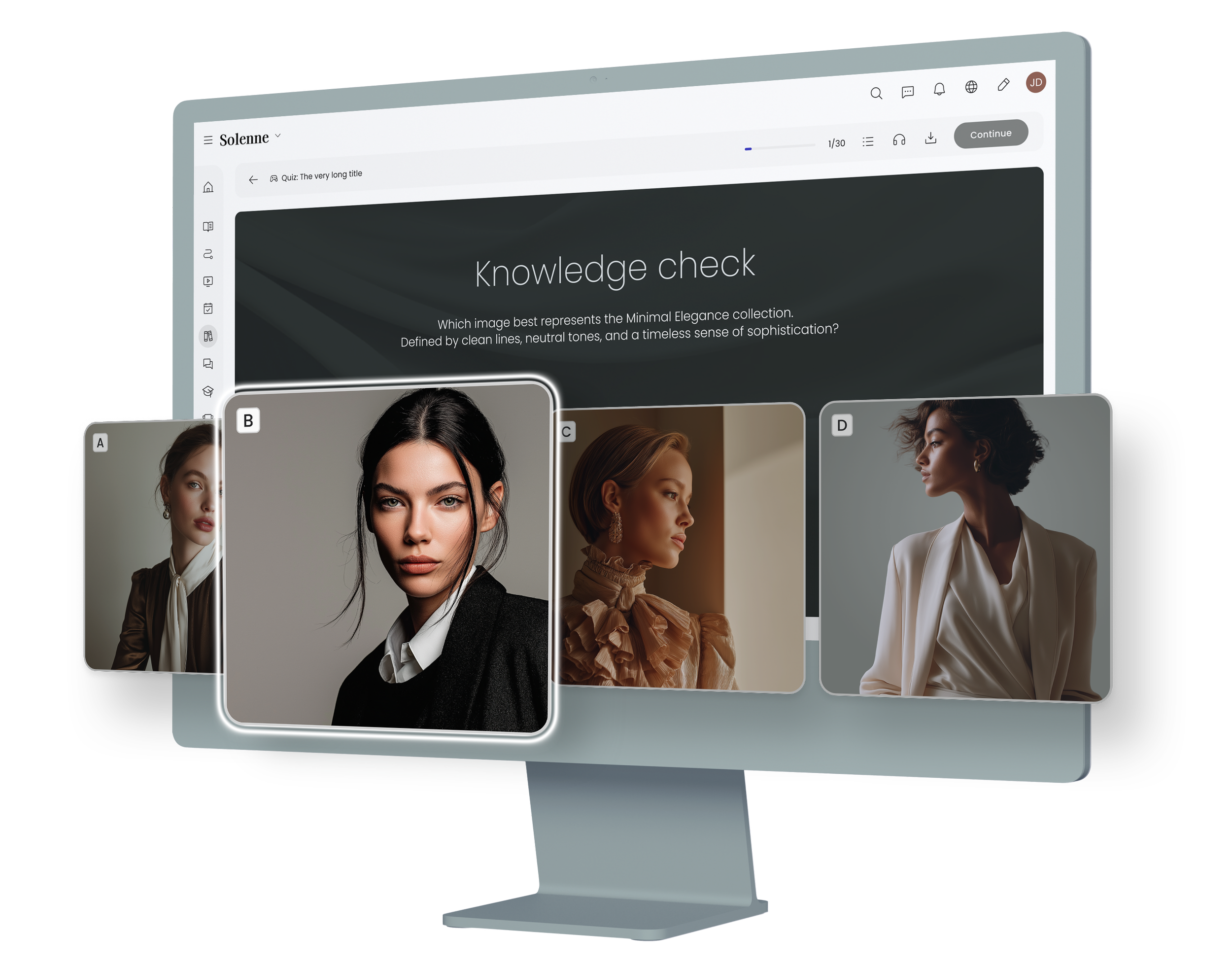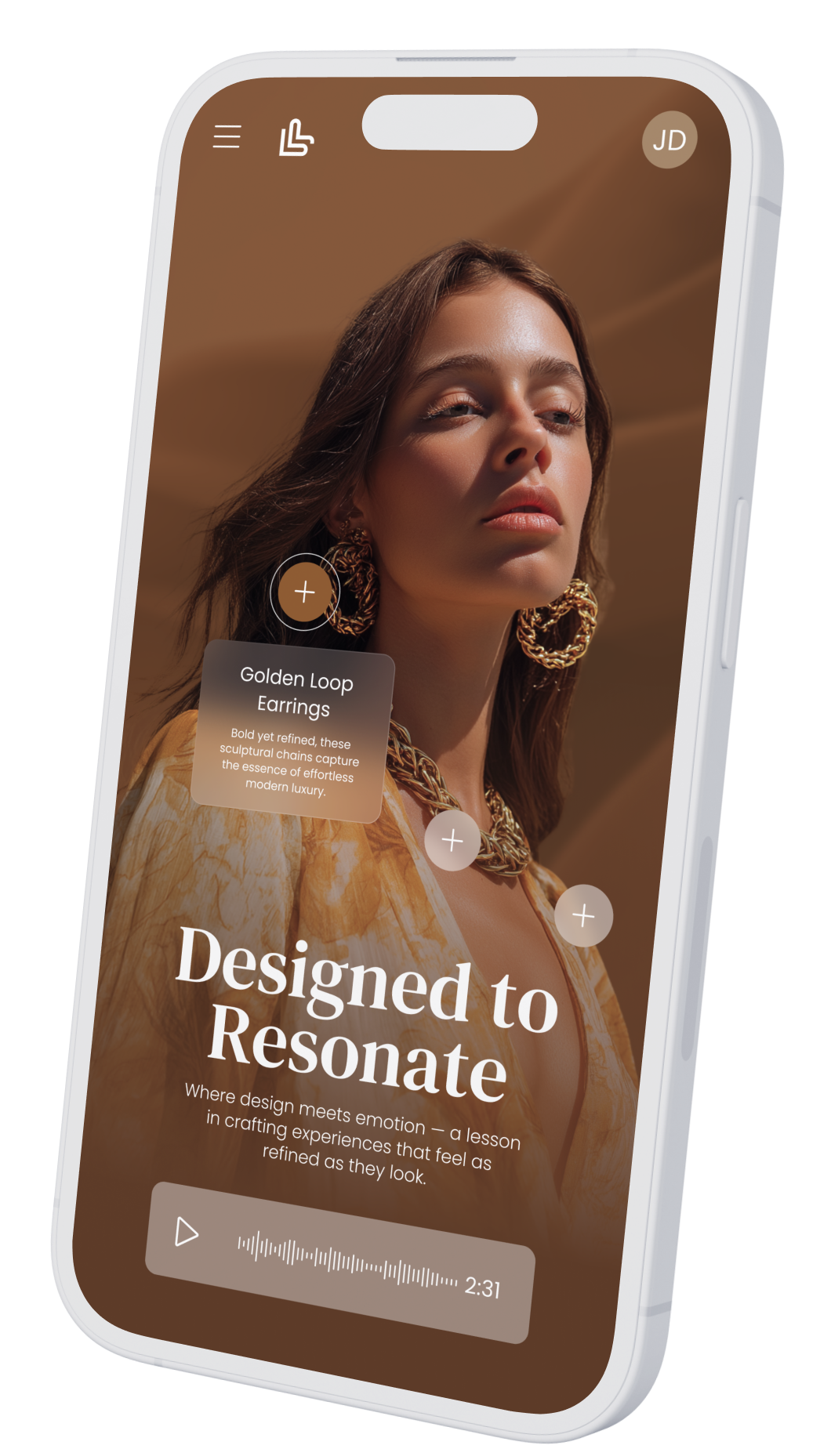Effective Strategies for Online Professional Training
Mastering the art of creating an impactful and interactive multimedia learning experience requires the perfect blend of educational psychology and innovative digital technology.
In today’s fast-paced business world, where continuous learning drives both personal growth and organizational success, the need for engaging, immersive online training has never been greater. High-quality eLearning content can transform traditional instruction into an interactive journey that inspires motivation, boosts knowledge retention, and improves real-world performance.
This article explores how to design a dynamic online training environment built on proven strategies such as video-based storytelling, interactive simulations, social learning platforms, and gamified experiences. Each of these techniques contributes to stronger learner engagement, deeper comprehension, and a lasting impact across diverse professional fields.
By the end, you’ll gain practical insights and creative methodologies to develop online training programs that educate, inspire, and empower learners. Whether you are an instructional designer, corporate trainer, or learning and development specialist, these approaches will help you elevate your training strategy into a powerful, results-driven experience that meets the evolving demands of modern eLearning.
This holistic approach not only enhances understanding and retention of key knowledge but also boosts learner confidence, encouraging active participation and real-world application of newly acquired skills.
Adopt Nano Learning Experiences
Incorporating nano learning, often referred to as microlearning, into online training programs is a powerful way to create engaging and interactive learning experiences that fit seamlessly into today’s fast-paced digital environment.
By breaking down complex topics into short, focused learning modules, learners can absorb and retain information more efficiently. These bite-sized lessons make it easier for individuals to grasp essential concepts, practice skills, and apply new knowledge immediately in real-world situations.
This approach is particularly effective in corporate eLearning and professional development, where time is limited and learner attention spans are short. Nano learning helps maintain learner engagement, promotes continuous learning, and supports long-term knowledge retention across diverse industries.
By integrating nano learning into your digital learning strategy, you can make the training process more flexible, personalized, and impactful—ensuring that every learning moment counts.
Benefits of Video-Based Learning
Video-based learning is one of the most effective methods for creating engaging and memorable online training experiences.
By combining powerful visuals, storytelling, and real-world scenarios, videos enhance learner engagement and support stronger knowledge retention across industries.
Incorporating interactive quizzes and checkpoints within videos encourages active participation, allowing learners to test their understanding and reinforce key concepts as they progress. This not only increases focus but also transforms passive watching into a meaningful interactive learning experience.
Advanced formats such as interactive videos take engagement even further. Learners can click through decision-based scenarios, explore different outcomes, and receive instant feedback, which deepens comprehension and improves the practical application of knowledge in real work situations.
Live video sessions bring a valuable human element to online learning by enabling real-time interaction, discussion, and feedback. Participants can ask questions, share insights, and collaborate with peers, replicating the benefits of a classroom setting within a virtual learning environment.
Additionally, screen-recorded tutorials and video demonstrations serve as excellent on-demand resources for complex tasks or software walkthroughs. Learners can pause, rewatch, and practice at their own pace, reinforcing understanding and confidence.
When combined strategically, these video-based learning techniques create a dynamic and immersive corporate eLearning experience that enhances both engagement and performance, making training programs more effective, flexible, and results-driven.
Benefits of Audio-Based Learning
Audio-based learning offers a flexible and convenient approach to online education, allowing learners to engage with content anytime and anywhere.
Whether during commutes, workouts, or daily routines, audio learning turns ordinary moments into valuable opportunities for continuous learning and professional growth.
This format is especially effective for auditory learners, delivering key concepts through clear, focused audio lessons that promote better understanding and long-term retention. Complex topics can be simplified into digestible audio segments, helping learners absorb information efficiently without the need for visual materials.
Podcasts, narrated lessons, and audio summaries are powerful tools for reinforcing key takeaways and maintaining engagement across different learning styles. They are also ideal for busy professionals who prefer mobile learning solutions that fit seamlessly into their schedules.
By incorporating audio-based content into a broader digital learning strategy, organizations can make training more inclusive, accessible, and adaptable to modern lifestyles. This approach supports self-paced learning, enhances knowledge retention, and encourages consistent engagement beyond the traditional training environment.
Offer Activities and Experimentations
Incorporating hands-on activities and experiential learning opportunities into online training is essential for connecting theoretical concepts with real-world application.
This approach transforms passive knowledge acquisition into active skill development, allowing learners to apply what they have learned in meaningful, practical ways.
Interactive exercises, simulations, and scenario-based challenges create an environment where participants can experiment, problem-solve, and make decisions that mirror actual workplace situations. These activities promote critical thinking and help learners gain confidence in applying new skills beyond the training platform.
By blending interactive training methods with structured reflection and feedback, organizations can significantly improve knowledge retention and learner performance. This method encourages deeper engagement and ensures that learning outcomes translate into measurable professional growth.
When integrated into a comprehensive corporate eLearning strategy, activity-driven and experimental learning enhances both the impact and effectiveness of training programs, turning theory into action and learners into active contributors to organizational success.
Adopt Blended Learning
Implementing a blended learning approach in online training combines the best of traditional classroom instruction and digital learning technologies to create a flexible and engaging educational experience.
This method allows organizations to deliver a hybrid training model that adapts to diverse learning styles, ensuring inclusivity and accessibility for all participants.
By integrating face-to-face sessions with interactive eLearning modules, learners benefit from the structure and social interaction of in-person education while enjoying the convenience and personalization of online learning programs. This balance enhances learner engagement, strengthens knowledge retention, and encourages the practical application of skills in real-world situations.
A well-designed blended learning strategy also supports continuous learning by allowing participants to access materials, resources, and assessments anytime, reinforcing key concepts beyond the classroom.
When adopted as part of a comprehensive digital learning strategy, blended learning promotes adaptability, collaboration, and long-term professional growth, making it one of the most effective approaches in corporate training and development today.
Do Not Forget Mobile Learning
Integrating mobile learning (mLearning) into your online training strategy is essential for meeting the needs of today’s modern learners.
With the flexibility to access educational content anytime and anywhere, mobile learning supports an always-connected workforce and promotes continuous learning beyond the traditional classroom.
This approach aligns perfectly with the lifestyle of contemporary professionals who prefer on-the-go learning that fits seamlessly into their daily routines. Whether through learning apps, responsive training platforms, or microlearning modules optimized for smartphones and tablets, mobile learning empowers individuals to learn at their own pace and convenience.
By incorporating mobile-friendly design and interactive content, organizations can significantly enhance learner engagement, accessibility, and retention. Mobile learning also encourages a culture of self-directed learning, enabling employees to revisit resources, complete training, or refresh knowledge whenever it suits them best.
As part of a comprehensive digital learning strategy, mobile learning ensures that education remains flexible, inclusive, and scalable, helping businesses deliver effective online training programs that adapt to the evolving needs of a digital workforce.
Provide a Complete Glossary
Including a comprehensive glossary within your online training program is a valuable way to support learners and ensure consistent understanding across all modules.
A well-structured training glossary acts as a quick-reference resource that helps participants clarify key terms, concepts, and definitions throughout their eLearning journey.
This feature is particularly useful in fields that use specialized or technical language, making content more approachable and reducing confusion for new learners. By simplifying complex terminology, you enhance learner confidence, improve knowledge retention, and promote a smoother, more engaging learning experience.
Integrating an accessible glossary of terms into your digital learning platform also fosters self-directed learning, allowing individuals to review and reinforce their understanding at any time. This contributes to stronger comprehension and a more cohesive educational environment across diverse audiences.
As part of a modern online learning strategy, providing a detailed glossary not only strengthens learner support but also adds structure and professionalism to your corporate eLearning content, ensuring clarity, consistency, and long-term learning success.
Deliver Diverse Documents and Materials in the Learning Library
Offering a variety of digital learning resources within a centralized training library is essential for creating an inclusive and effective online learning environment.
Providing learners with access to multiple content formats—such as PDF guides, presentations, videos, infographics, and case studies—ensures that individuals can engage with materials in the way that best suits their learning preferences.
This approach supports a more personalized and flexible learning experience, allowing participants to explore topics at their own pace and revisit resources whenever needed. A well-organized eLearning resource library also encourages self-directed learning and strengthens overall knowledge management within an organization.
By delivering a wide range of training materials, companies can enhance learner engagement, improve comprehension, and support diverse learning styles. This not only enriches the overall corporate eLearning experience but also helps ensure that every learner has the tools and information necessary for long-term success.
When integrated into a broader digital learning strategy, a comprehensive library of resources transforms online training into a more adaptable, accessible, and empowering experience for all participants.
Invest in Coaching and Communication
Investing in personalized coaching and effective communication strategies within online training programs is vital for creating a supportive and engaging learning environment.
Personalized coaching provides learners with individualized feedback, guidance, and encouragement that help them stay motivated and focused throughout their learning journey.
Clear and consistent communication between instructors, mentors, and participants enhances collaboration and builds a stronger sense of connection within the virtual learning community. This approach allows learners to seek clarification, share insights, and receive constructive feedback, which improves both confidence and performance.
Incorporating coaching and mentoring programs as part of a comprehensive corporate eLearning strategy ensures that training remains people-centered, interactive, and results-driven. Regular communication channels—such as live sessions, discussion forums, and virtual office hours—help maintain engagement and provide ongoing support.
By prioritizing learner communication and coaching initiatives, organizations can strengthen employee development, improve skill application, and foster a culture of continuous learning that drives both individual and organizational growth.
Leverage Social Learning
Incorporating social learning into online training programs fosters a collaborative environment where learners can share experiences, discuss ideas, and solve challenges together.
This interactive approach transforms learning from an isolated activity into a dynamic community experience that promotes engagement, motivation, and shared growth.
Through discussion forums, peer-to-peer learning groups, and collaborative digital platforms, participants gain valuable insights from one another’s perspectives and experiences. This type of collaborative learning strengthens understanding, enhances knowledge retention, and builds a culture of continuous improvement within the organization.
Encouraging social interaction in corporate eLearning not only boosts learner satisfaction but also cultivates teamwork and communication skills that extend beyond the training program. By leveraging social learning tools—such as online communities, group projects, and real-time collaboration sessions—organizations can create a more connected and empowered workforce.
When integrated into a modern digital learning strategy, social learning enhances engagement, deepens comprehension, and ensures that knowledge becomes a shared asset across the organization.
Adopt Peer-to-Peer Learning
Implementing peer-to-peer learning within online training programs encourages the exchange of ideas, experiences, and best practices among participants.
This approach fosters a strong sense of community and collaboration, transforming learners into active contributors to the overall learning experience.
Through group discussions, mentorship exchanges, and collaborative projects, participants gain valuable insights from their peers while reinforcing their own understanding of key concepts. This method promotes knowledge sharing and helps bridge the gap between theory and practical application.
Peer-to-peer learning also enhances engagement and motivation by creating a supportive environment where learners feel empowered to contribute, ask questions, and learn from each other’s perspectives. The result is a richer, more dynamic, and more effective corporate eLearning experience.
When integrated into a broader digital learning strategy, peer-to-peer learning strengthens teamwork, improves communication skills, and builds a culture of continuous improvement—making it a powerful tool for long-term employee development and organizational growth.
Give Visibility to Experts
Highlighting industry experts through webinars, interviews, and guest sessions adds exceptional value to any online training program.
This approach gives learners direct access to expert-led learning experiences, offering real-world insights, proven strategies, and current best practices that enhance both understanding and application.
By featuring subject matter experts, organizations can enrich their digital learning content with credible, authoritative perspectives that inspire confidence and curiosity among participants. Learners gain exposure to cutting-edge knowledge and practical case studies that bridge the gap between theory and practice.
Expert sessions also foster engagement by introducing diverse viewpoints and sparking meaningful discussions around emerging trends and industry innovations. This form of thought leadership helps position training programs as trusted, high-quality resources for professional development.
Integrating expert visibility into your corporate eLearning strategy builds trust, enhances learner motivation, and creates a richer, more dynamic educational environment that supports continuous learning and organizational excellence.
Remember That Brand Matters
Designing and delivering online training programs with a consistent and professional brand identity is essential for building credibility and reinforcing organizational values.
A well-branded digital learning experience not only communicates expertise and attention to detail but also enhances the perceived quality of the training itself.
When learners engage with thoughtfully branded materials—complete with cohesive visuals, tone, and messaging—they develop a stronger connection to the organization and its mission. This consistency conveys reliability, professionalism, and pride in the learning experience.
Integrating brand elements such as logos, color schemes, and messaging across your corporate eLearning content helps create a unified learning environment that feels authentic and trustworthy. It also positions the organization as a leader committed to excellence in both training quality and learner experience.
A strong and recognizable brand presence within online learning platforms boosts engagement, reinforces organizational culture, and builds learner trust and loyalty. In today’s competitive landscape, aligning your training design with your brand strategy is not just an aesthetic choice—it is a strategic investment in long-term learning impact and corporate reputation.
Create an Adapted Learning Path
Developing personalized learning paths tailored to each learner’s goals, preferences, and pace is one of the most effective ways to enhance online training effectiveness.
By aligning the learning journey with individual needs, organizations can deliver adaptive learning experiences that improve comprehension, retention, and skill application.
This learner-centered approach allows participants to engage with content that matches their current knowledge level while progressing at a comfortable speed. Customized learning pathways also make training more relevant and motivating, helping learners take ownership of their educational experience.
Through the integration of data-driven learning platforms and AI-powered analytics, organizations can track progress, identify knowledge gaps, and automatically adjust content delivery to ensure consistent improvement.
Incorporating adapted learning paths into your digital learning strategy leads to higher engagement, stronger performance outcomes, and a more inclusive approach to corporate eLearning. This method ensures that every learner receives the right level of challenge and support, maximizing both learning satisfaction and overall training success.
Conclusion
In conclusion, creating an impactful and interactive multimedia learning experience requires a thoughtful blend of educational psychology, instructional design, and digital technology.
Effective online training programs are built not only on delivering information but on engaging learners through meaningful, practical, and well-structured experiences.
As explored throughout this article, the key to success in modern corporate eLearning lies in combining diverse strategies such as video-based storytelling, interactive simulations, social learning, gamification, and mobile learning. Together, these methods create immersive and adaptable environments that drive learner engagement, improve knowledge retention, and encourage real-world application of skills.
By implementing these online learning strategies, organizations can transform traditional training models into innovative, results-driven programs that inspire motivation and long-term growth. This approach empowers instructional designers, trainers, and learning and development professionals to build training experiences that not only educate but also elevate performance and reinforce a culture of continuous learning.
Adopting these practices ensures your digital learning experience stands out for its quality, interactivity, and effectiveness, setting a new benchmark for professional training excellence in today’s evolving digital landscape.






